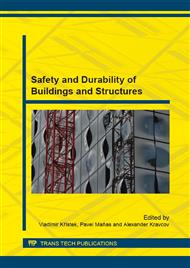p.69
p.77
p.85
p.91
p.99
p.111
p.119
p.125
p.137
Ecological Requirements for Concrete Construction
Abstract:
The population explosion has lead to a markedly increased exploitation of our natural environment, hence the expression „sustainable development“ has become a catch phrase. In a historical perspective ecological problems recently became acute and this is why it is necessary to act quickly. It is obvious that we have to pay extreme attention to how we treat our environment and our sources. This necessarily will be reflected in the actions of the lawmakers in the future, and for the building industry the results will be that the authorities will enforce new law and regulations with direct consequences for the choice of materials and building techniques. There will be developed a set of standards dealing with environmental matters, putting limitations especially on the consumption of natural resources. Some countries already has standards dealing with various ecological aspects, like recirculation, down cycling, etc. The customers will prefer building products and systems that can document compliance with environmental attitudes. For all activities the environmental burden will be evaluated and limited by laws and regulations. Consequently the industry’s accountability for the environment will be a prerequisite for remaining in business.
Info:
Periodical:
Pages:
111-118
Citation:
Online since:
October 2015
Authors:
Price:
Сopyright:
© 2015 Trans Tech Publications Ltd. All Rights Reserved
Share:
Citation:


